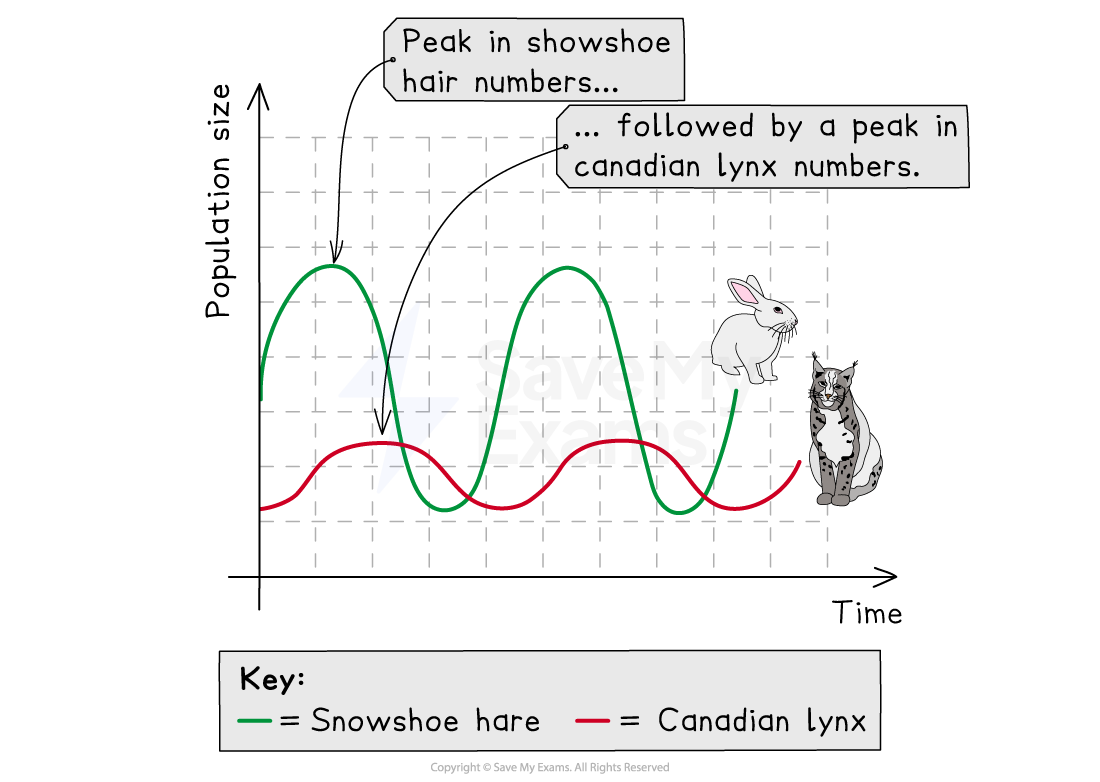Factors Affecting Distribution (SQA National 5 Biology): Revision Note
Exam code: X807 75
Biotic & abiotic factors
The distribution of a species within a habitat is determined by a combination of biotic and abiotic factors
Biotic factors
Biotic factors are living factors that come about as a result of the activity of other organisms, e.g.:
competition for resources
disease
food availability
grazing, i.e. the effect of herbivory on plants
predation
Biotic factor | Effect on populations | Example |
|---|---|---|
Competition | If two populations compete for the same resources and one is better adapted, it will outcompete the other, causing the less successful population to decline in numbers | In some Scottish rivers, the arrival of non-native Pacific (pink) salmon has raised concerns that they may compete with native Atlantic salmon for spawning sites |
Disease | Populations may have no immunity to a new pathogen, so numbers may decline, or a local population may be wiped out | Avian influenza outbreaks caused major mortality in Scottish gannet and tern colonies |
Predation | In balanced ecosystems, predators take enough prey animals to survive, but not so many that they wipe out the prey If a new predator is introduced, the system can become unbalanced | Brown rats arriving on seabird islands (e.g. by boat) prey on eggs and chicks, reducing breeding success until eradicated |
Food availability | More food means that organisms have a higher chance of surviving and reproducing, so populations can increase | Good Scots pine cone “mast” years increase food for red squirrels, boosting winter survival and breeding the next spring |
Example: predators and prey
The relationship between the Canada lynx and the snowshoe hare is a famous example of a predator-prey interaction
The graph below illustrates some of the key patterns in predator-prey cycles
The predator population increases when there is more prey available
The prey population decreases in response to an increase in the number of predators
The predator population decreases in response to a decrease in the number of prey
The prey population increases in response to a decrease in the number of predators
The cycle repeats

It is worth noting that relationships of this kind, with a single predator species and a single prey species, are unlikely to exist in this simple form in nature
There will be other predator and prey species in most food webs
Additional factors will affect the sizes of the two populations
Abiotic factors
Abiotic factors are non-living factors that influence populations within their community, e.g.:
light intensity
moisture
pH, e.g. of soil or water
temperature
Abiotic factor | Effect on populations |
|---|---|
Light intensity | Light is needed by plants for photosynthesis; more light increases the rate of photosynthesis and the plant growth rate |
Moisture | Plants and animals require water to survive |
pH | Different plant and animal species are adapted to different soil or water pH levels |
Temperature | Determines the rate of enzyme-controlled reactions. In plants, warming towards the optimum increases photosynthesis and therefore growth rates |

Unlock more, it's free!
Did this page help you?